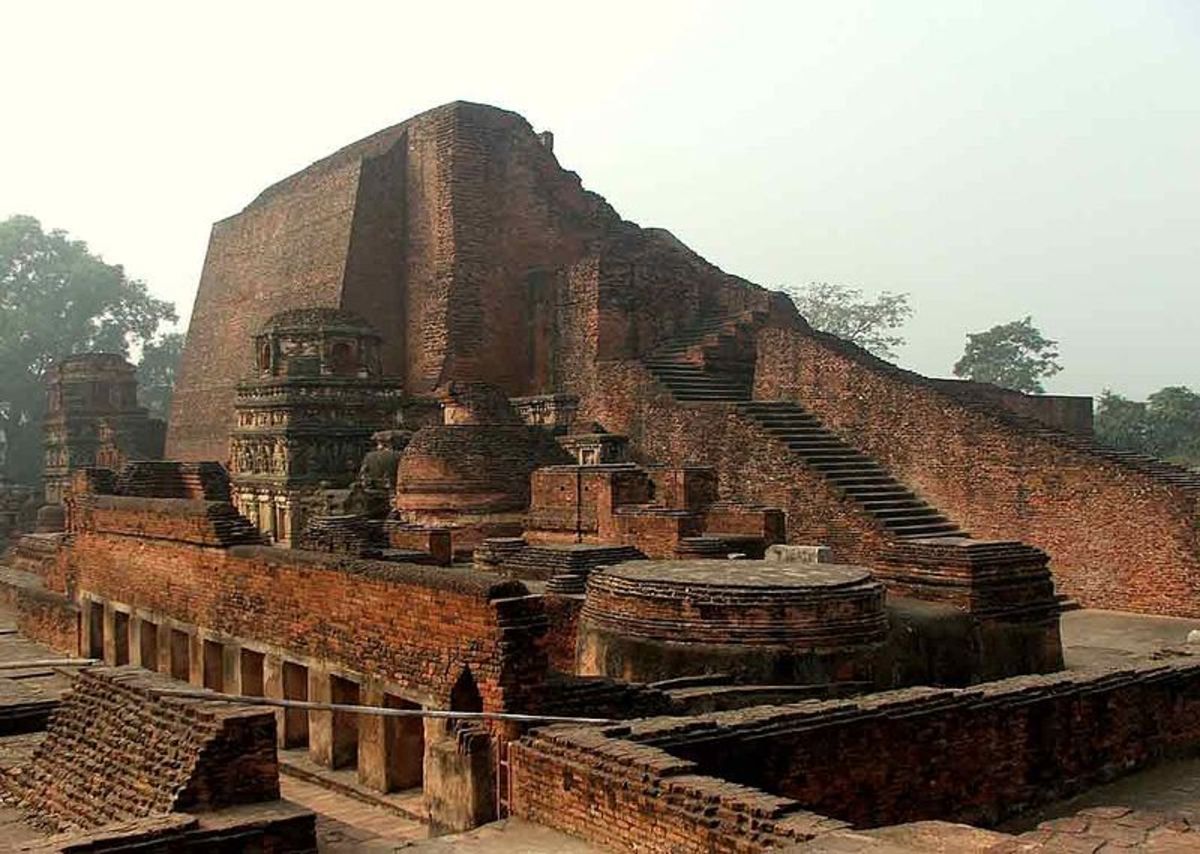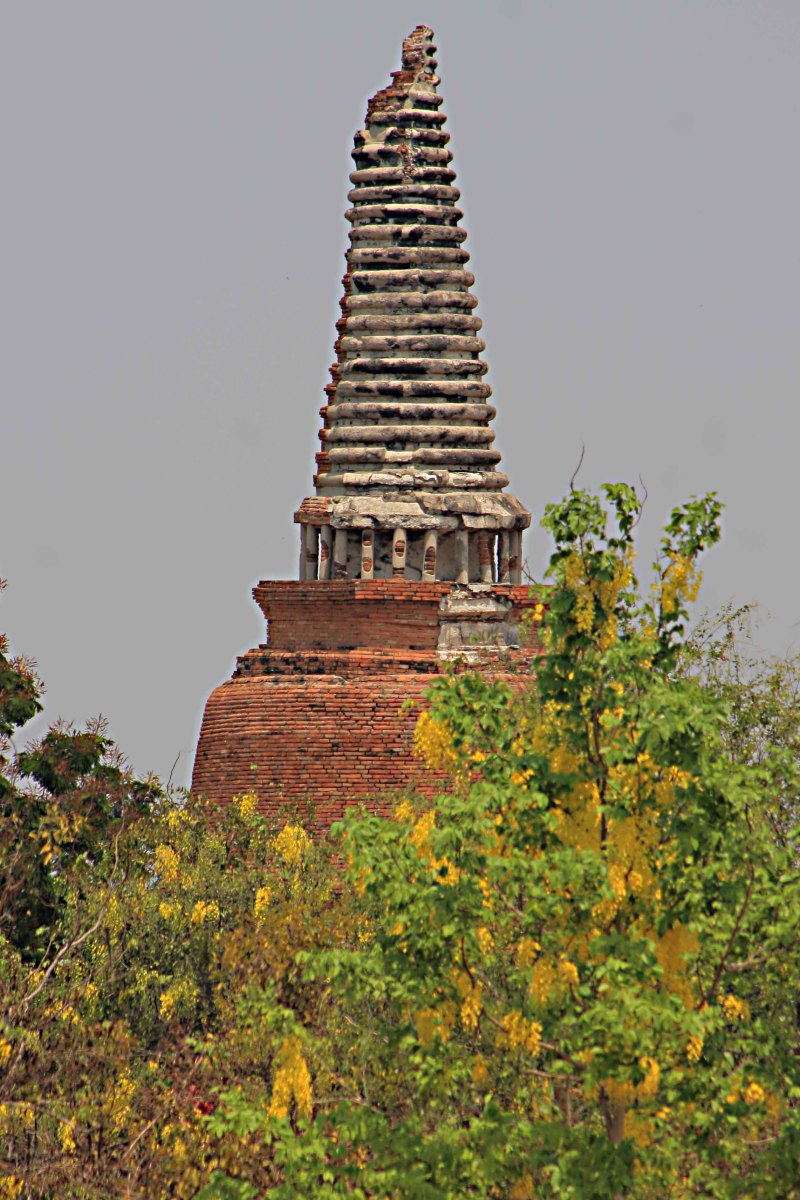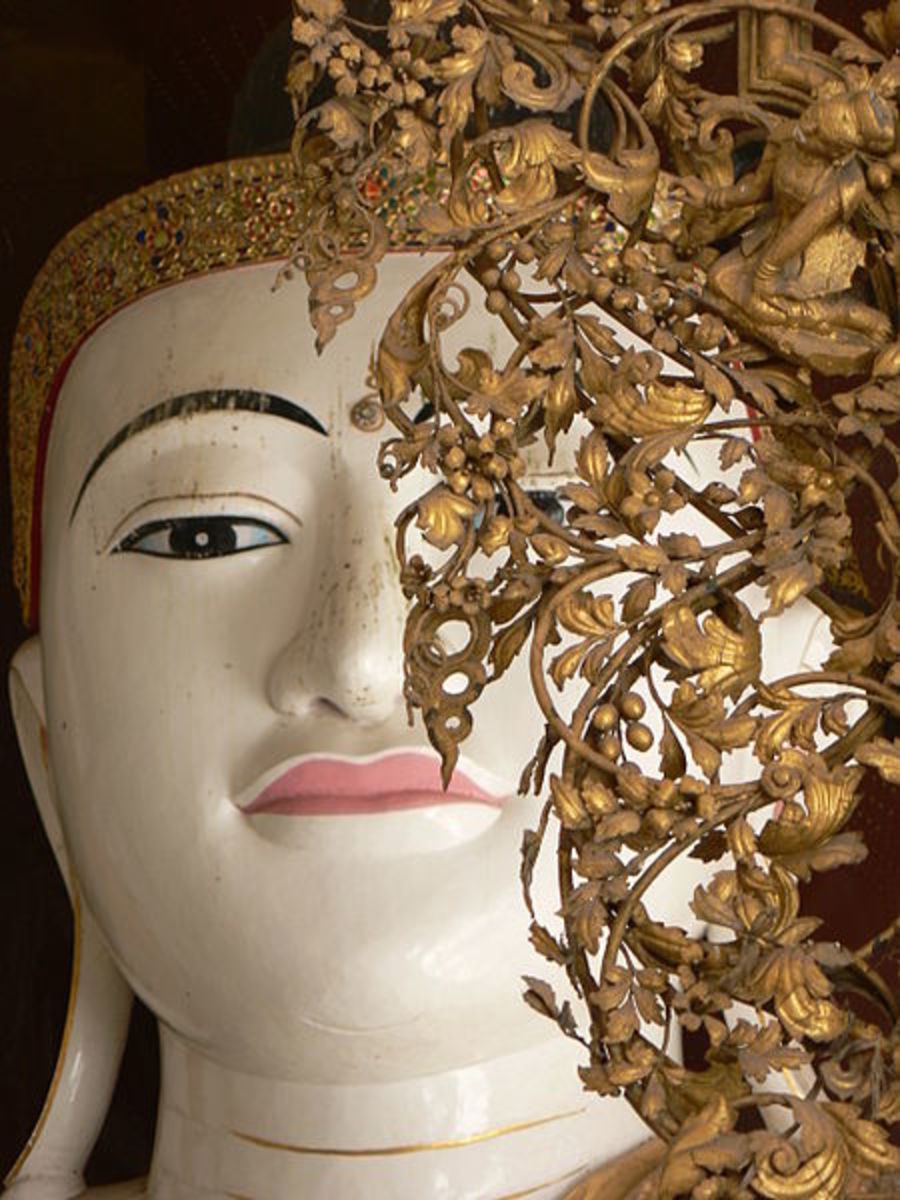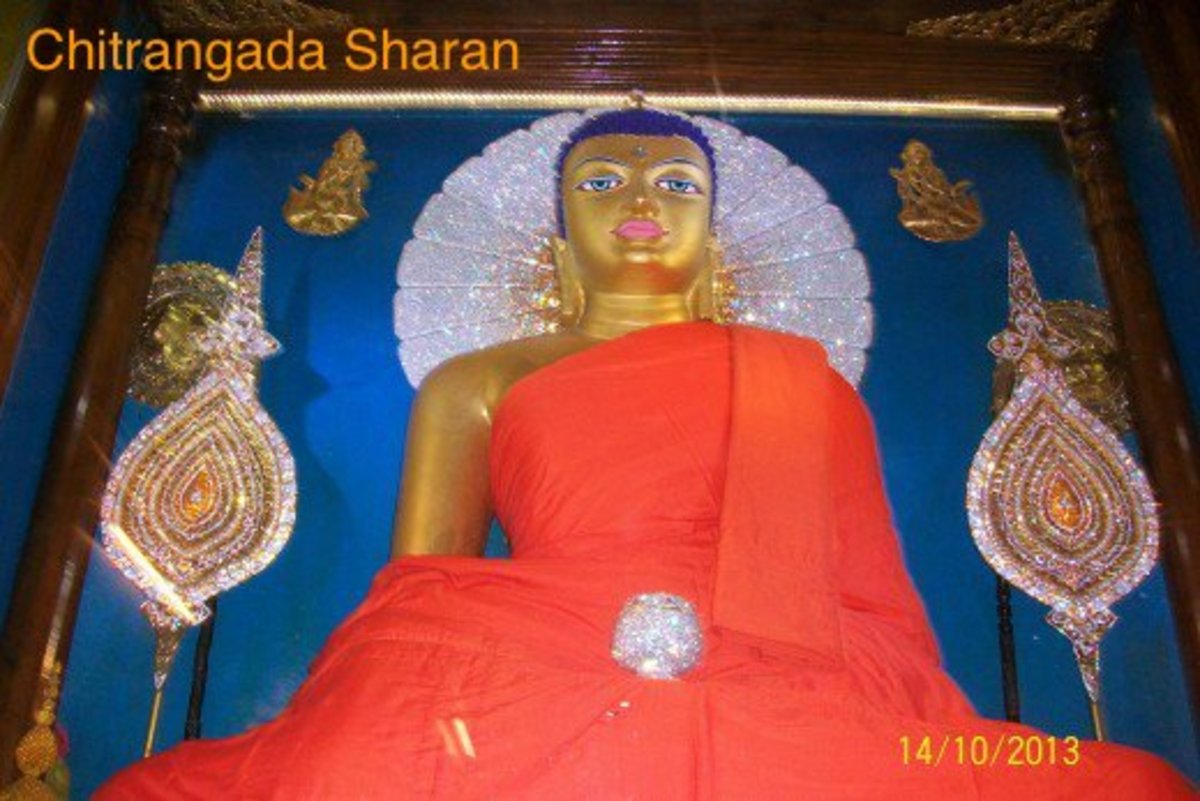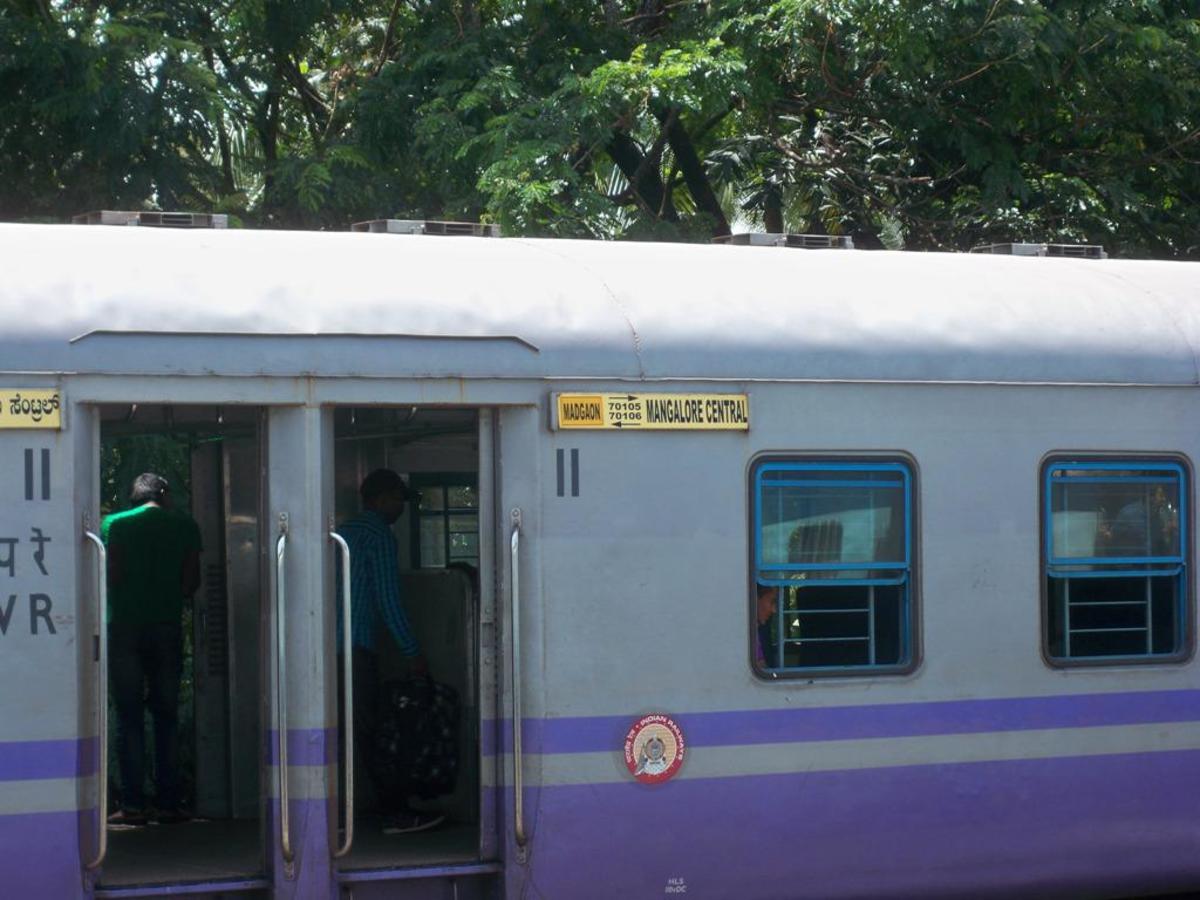A visit to ancient cities of Gaya and Nalanda

For some time, I had been having a strong desire to visit Mahabodhi temple in Bodh Gaya, (Bihar), India. I had been postponing the visit to Gaya for over a period of one year on account of some or other reason. Finally, I decided that I will make this trip at any cost in spite of any kind of preoccupation. And, therefore, my wife and I took an overnight rail journey to Gaya (Bihar) from my home city in the third week of Oct. 2015. Bothgaya, which is famous for the Mahabodhi temple, is situated in the district of Gaya (Bihar).
The Mahabodhi temple -
The Mahabodhi temple complex is situated about 16 km. from the district headquarter at Gaya in the state of Bihar, in eastern India. It is one of the four holy sites related to the life of Lord Buddha. In the sixth century BC, Prince Siddhartha Guatama attainted supreme enlightenment at this holy place and became the Buddha.

In commemoration of this event, Emperor Asoka set-up the Vajrasana (Diamond Throne) of polished sandstone, representing the seat of enlightenment in third century B.C. Thereafter, he built a stupa in veneration of the Buddha who remained there up to the second century A.D. The original structure of Mahabodhi temple was completed in seventh century A.D. during the reign of Gupta kings.
It is one of the earliest Buddhist temples built entirely in brick, which is still standing from the late Gupta period. Emperor Asoka built the first temple, the balustrades and the memorial column. The subsequent evolution of the ancient city with the building of sanctuaries and monasteries was done by foreign kings over the centuries. The temple underwent many renovations and restorations in the subsequent period, in which Burma (presently Myanmar) contributed greatly. In 1883, a very thorough and scientific renovation of the temple was done under the supervision of the British archaeologists Sir A. Cunningham and J.D.M. Beglar and the Indian archaeologist Dr.Rajendra Lal Mitra. The gold painted statue of Buddha in the sanctum shrine of the Temple is made of black stone built by the Pala kings of Bengal. The Buddha is seen seated in the Bhumisparsa Mudra (the earth touching posture).
Situated in the south of the Temple, there is the Bodhi Tree, also known as “Bo” and "peepal tree", which is a large and very old sacred tree (Ficus religiosa), under which Siddhartha Gautama, is said to have attained enlightenment. The present sacred tree is a direct descendent planted in 288 BC from the original specimen. Other holy Bodhi trees, which have a great significance in the history of Buddhism, are the Anandabodhi tree in Sravasti and the Bodhi tree in Anuradhapura, Sri Lanka. Both are believed to have been propagated from the original Bodhi tree.
The Mahabodhi temple has now been declared a World Heritage Site by the UNESCO on the 27th June 2002.
After visiting the Mahabodhi temple and other Buddhist temples constructed by many countries in Bodh Gaya, we decided to visit Nalanda, which is situated at a distance of 100 km. from Bodh Gaya. We planned the trip by car because despite its convenience it will save us time since we had to come back to Badhgaya the same day as we were staying there in a hotel.
Nalanda is a district with headquarter Biharsharif (Bihar) situated at a distance of 100 km. from the city of Bodh Gaya. It is very famous for the ancient Nalanda University, which now exists as ruins.
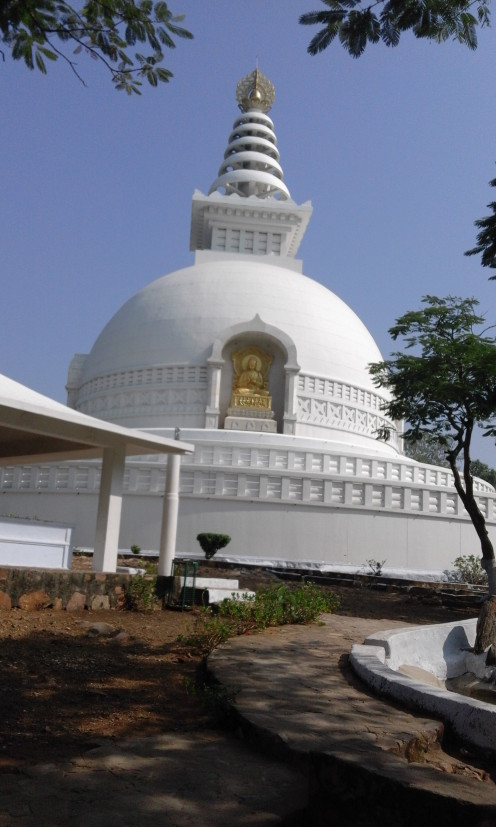
Town of Rajgir –
It is a town located in Nalanda district of the state of Bihar. Rajgir literally means “the home of King”. This ancient city existed even before the Buddha’s time. Rajgir was the ancient capital city of the Magadha Kings until the 5th century B.C when Ajatshatru moved the capital to Pataliputra (now Patna). During that period, Rajgir was called as Rajgirh, which literally means the “home of Royalty”. The mythological epic Mahabharata has called it Girivraja. Besides, it has also been mentioned in Buddhist and Jain scriptures with different names. Chinese Buddhist pilgrims, Faxian and Hiuen Tsang have given the reference of Rajgir and many other nearby locations in their works. Because of its association with Lord Buddha and Mahavira, Rajgir has special status of reverence for the followers of the religions of Buddhism and Jainism.
The city was fortified by the stone wall, which still exists partially. Rajgir with the natural fortification by five hills has some of the caves. And that is why it was a favorite abode of the Buddha for meditation, due to which the place has special reverence for the Buddhists. The Buddha used to meditate at the peak of Gridhrakuta mountain as it was his favorite spot for meditation. At this spot Shanti stupa was built which is a major attraction for tourists.
The Rope way is another attraction of Rajgir that leads uphill to the Shanti Stupa and Monasteries built by the devotees of Lord Buddha.
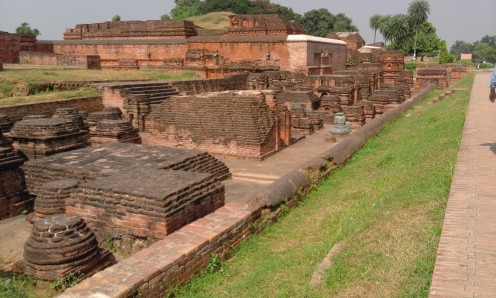
Ancient University of Nalanda –
The history of Nalanda, the ancient university town of Bihar, goes back to the days of Buddha in the sixth century B.C. The town was home to Nalanda Mahavihara, a monastic university of international repute. According to ancient sources, Asoka, the Mauryan emperor built a temple at Nalanda in third century BC. It was a flourishing hub where the philosopher and alchemist, Nagarjuna, studied and taught in the second century A.D. However, excavations have not revealed anything to suggest that the site was occupied before the Gupta period in fifth Century A.D., the earliest finds being a copper plate of Samudragupta and a coin of Kumaragupta (414-455 A.D.). Fa-Hien who visited in the fifth century A.D. makes no mention of the massive monastic establishments at Nalanda. But Hiuen Tsang who came in A.D 637 during Harsha's reign (606-647 A.D.) refers to the great monastery that Harsha endowed with liberal grants. Huien Tsang, who stayed here for 5 years to learn Buddhism, gives a vivid description of the glorious learning centre.
The ruins of the world’s first residential university still mesmerize the visitors. The university had a long and illustrious life, which lasted for 800 years from the fifth to twelfth century AD. It was a completely residential university with over 2000 teachers and 10,000 students. The ruins of Nalanda University reveal through their architectural components the holistic nature of knowledge that was sought and imparted at this University. It suggests a seamless association between living and learning. The profound knowledge of the Nalanda teachers attracted scholars and students from places as distant as China, Korea, Japan, Tibet, Mongolia, Turkey, Sri Lanka and South East Asia.
Close to the end of the twelfth century, Nalanda was destroyed by invaders. Only Al Azhar in Cairo (972 CE), Bologna in Italy (1088 CE) and Oxford in the United Kingdom (1167 CE) had been founded before the destruction of Nalanda University.
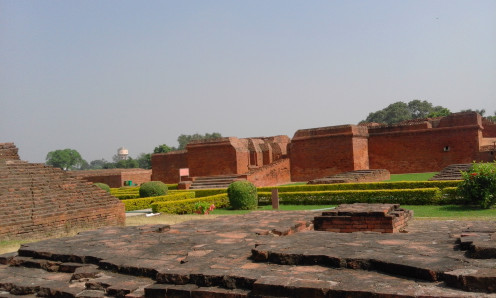
The bottom line –
The Bodhi tree, under which the Buddha attained enlightenment, has become the magnet for tourists all over the world, including non-Buddhist tourists. The architectural styles of the Mahabodhi temple and other temples built by various countries at Bodh Gaya reflect their magnificence expressing rich heritage aesthetics.
The ruins of Nalanda University also reflect the architectural magnificence of its existing period, which always mesmerizes visitors. The ruins also exhibit the seamless co-existence of man and nature at that time.
The experience of this trip has not only been exhilarating but also enlightening because it revealed how highly developed the standards of the contemporary society were in terms of education, elegance of architectural style and spirituality.

